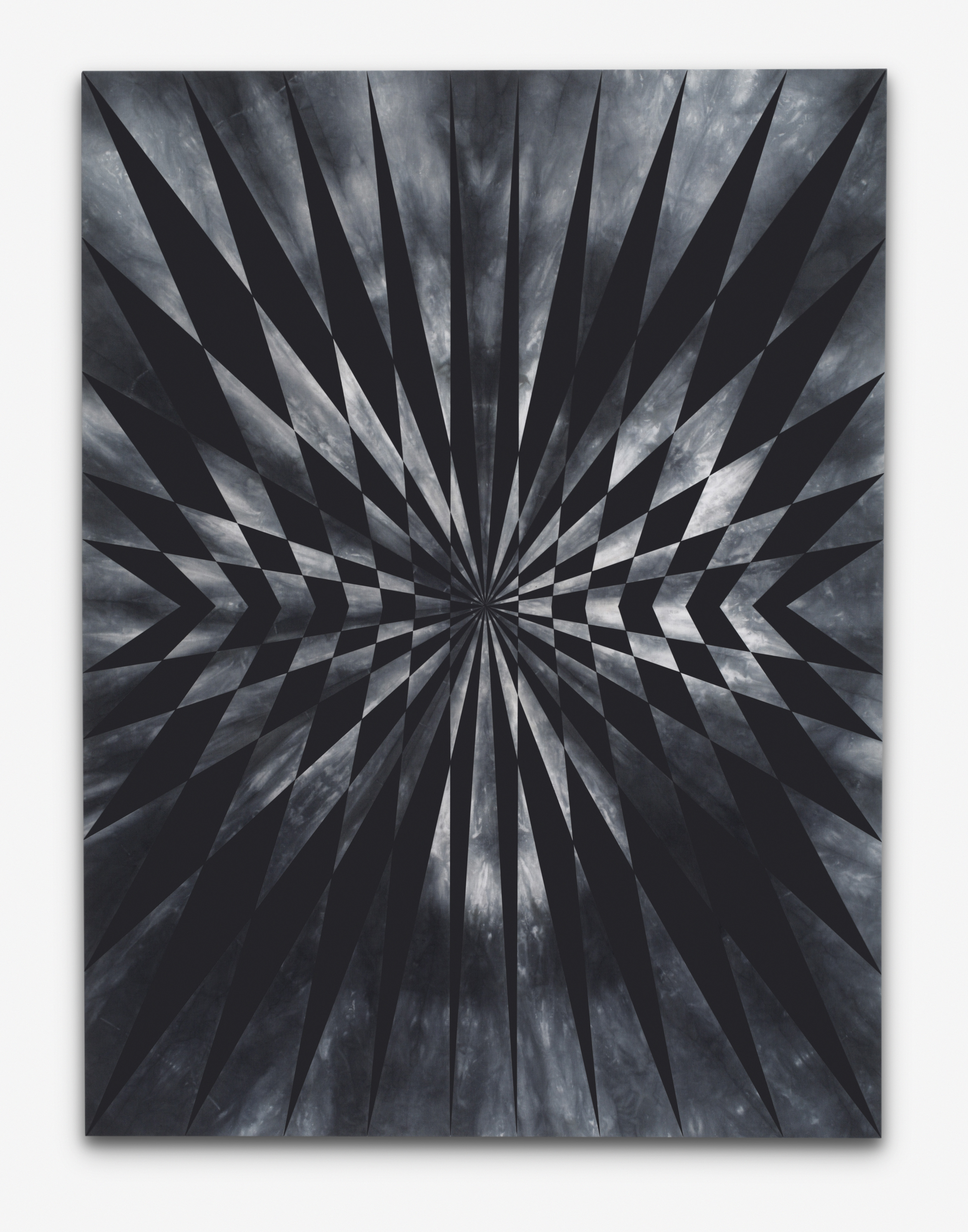Anja Schwörer
By Bob Nickas
Page 92 in Bob Nickas: Painting Abstraction: New Elements in Abstract Painting - The definitive guide to contemporary abstract painting. Phaidon 2009.
Titles, for abstraction in particular, can open up pathways into artworks, into their sources and meanings, can direct our readings in ways we might not have otherwise considered, and can even offer insights to the mind of the artist. A title may also lead nowhere useful, or even to misdirection, which mayor may not be the artist's intention. A title can be thought of as either an anchor holding an object, still buoyant, in place, or as so much dead weight. Anja Schwörer, for her part, never titles paintings. The works are already so visually suggestive - of the cosmos and infinity, of order and disorder, of what is knowable and unknowable, of the heavens and darker realms - that language would only interfere with their energy and resonance. Her works are in no way mute; they are in fact the results of visible transmutation, and for the viewer there is a kind of unspoken agreement: to look at the work is to cede to them, if only momentarily, as objects of contemplation, evoking either wonder or dread. Schwörer has said that she is interested in where abstract art comes from, and a number of artists are brought to mind - Kandinsky, Noland, and Stella - but she also has an affinity for spiritual and esoteric pursuits (one can't help but think of William Blake and "the doors of perception" in this respect), to which she remarks, "I am making ornaments to express the indescribable."
Schwörer’s works are characterized by various dualities; on the one hand there is control, as created by geometric elements (geometry, that perfect world), and on the other there is a great degree of chance in her initial procedures (chance, the aleatory world). She is always interested in the realization of the works being poised between certain and uncertain outcomes. Untitled (2008), for example, was made by first stretching black fabric covered in wax, using a knife to incise lines in the wax, bunching up the fabric from the center outward and tying it with string, pouring bleach, then opening it up and painting the spiral. The resulting picture, complete with the signs of its making, appears to be a chaotic, exploding world with an unbroken but unraveling timeline. With the batik process, Schwörer refers to the bleaching as an act of deletion, a further dualism in her work, between
what is given and what is taken away. Removal, however, is almost always followed by a further layer, the geometric structure or ornamental "grille" that sits on the very surface of the picture plane. The Iron Cross-like form that dominates Untitled (2008) acts as a barrier before a blackened sky, while the harlequin-patterned screen in Untitled (2007) offers myriad diamonds framing a view of a smudged twilight. The iconic white mirrored form central to Untitled (2008) is like a geometric spider that spreads across a well or chasm into which we look vertiginously down. The grille, which Schwörer sees as "a kind of force field" or portal, is always symmetrical, an image of reflection and doubling.
A recent work, a red and black Rorschach folding in and out of itself, bleached on velvet, merges its symmetry with the very process by which it was created, a further dualism: between handcraft and geometry, between earthly and higher planes.
Near mystical, Blakean visions of deep space in a number of black paintings from 2007 reveal Schwörer’s darker sensibility (as well as her interest in metal bands like Bolt Thrower, High on Fire, and EyeHate-God). These are among her most stunning and enigmatic works to date. In one, an intensely bright white light with radiant beams holds the center of a deadened universe, while in another a "black sun" is the vortex of an eerily silent field of what might be gas, dust, and stars - a sublime spiral galaxy. Schwörer’s painted/dyed works correspond to another area of activity: her production of photograms, pictures made in the darkroom without a camera. For these she chooses vernacular objects - a wind chime, for example and engages with the tradition of working with light to create an image. She relates them to her studio practice, noting, by way of reversal, "in the paintings I delete light' Whether considering the painted/dyed/ bleached works or Schwörer’s photograms, it's the alchemical nature of her endeavor that unifies this parallel universe.


